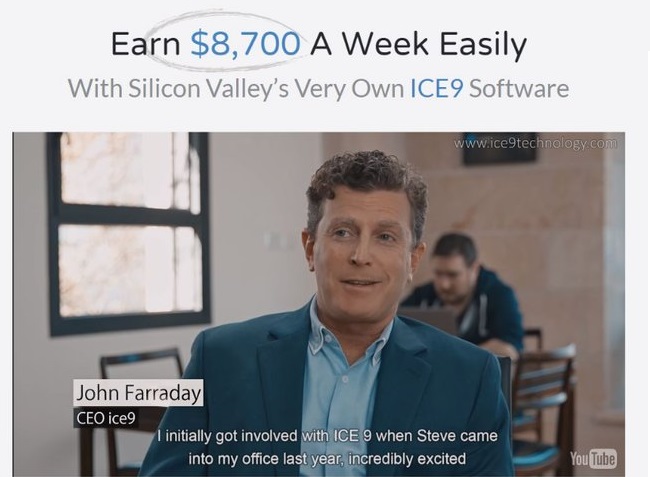
And who doesn’t like a good vintage synthesizer nowadays, right? They are old plugins and no longer supported, but I guess that also makes them vintage in a way. Or, in this case, the hardware always sounds meaner.Īnyway, you can now get Novation’s discontinued V-Station and B-Station plugins for free. The grass is always greener, as they say. Yes, it probably sounds exactly the same as the hardware, but it just doesn’t sound the same to me.
ICE9 AUTOMUTE SOFTWARE
The plugin V-Station is powered by the same synthesis engine as its real-word twin and offers all the advantages of the software format. Needless to say, I purchased the plugin edition after selling the hardware V-Station in order to get some of that old magic back into my setup.

Great for basses, arpeggios, and leads that literally cut through all other instruments. I know it’s an ancient virtual analog synthesizer, and it’s not supposed to sound good as such, but I really loved that little synth. The thing is, none of the other synthesizers I used in my band setup (Alesis Micron, Korg MS-2000, and most recently the Minilogue) matched V-Station’s raw sound. I played quite a few gigs with the V-Station (not to mention countless band rehearsals), programmed dozens of patches on it, and decided to sell it after a few years because I needed something with a wider keyboard. Thanks to the built-in effects, it sounded huge and was relatively easy to program when paired with the software editor. It was the very first hardware synthesizer I ever bought, and it was incredible at the time. To say that I have a soft spot in my heart for the hardware version of Novation’s V-Station synthesizer would be an understatement.
ICE9 AUTOMUTE FOR FREE
In short - you're probably working with your levels a little too loud, and noise bursts are particularly loud and dangerous to the ear, compared to music, at any given level.Novation offers the discontinued V-Station and B-Station virtual instruments for free download. You'll very likely find that, unless you're writing slamming electro music, the level of your music is pretty low, particularly if you're leaving a good amount of headroom when working. Now stop the noise and play your cubase music. With your monitors/headphones set very very low - turn the level of that noise up towards 0db (it defaults to -12 when you open the plug in I believe). You can easily mimic it by creating an audio track in CB, adding the "TestGenerator" and selecting white noise. However, the sort of noise you're trying to protect against is not transient in nature, but prolonged. Loud things in music tend to be very brief, the transient hit of a drum for example. you should be working with some headroom, such that your music, in it's loudest sections still has a level of several db lower than zero - in my case, mixes in cubase peak at around -12, although you might get different advice from different people on that. Yes latency increases by approx 1ms - I just googled it and that latency info is on the steinberg website.Ī very quick explanation - you'll have to search around the forum to learn more.

To answer your questions about the limiter (as separate from the above info) - yes signal under the threshold remains intact / un-affected.

Jbridge has proved very useful in allowing me to keep a couple of other old vst plugins too.Īlternatively Nugen's "sig mod" product has a module that does the same thing. you would still need to spend a small amount of money on (the incredibly useful) jbridge to create a 64bit compatible. Annoyingly I think it's 32bit only so won't work if you're using more recent versions of cubase, unless you jbridge it. If you search for "Ice9 vst" there's a free plug-in that will do it well. That's because, depending upon how loud you're working, the solution above will have some usefulness - but could still end up with you hearing a very loud, prolonged sound. To protect against loud sounds you ideally should have something that will quickly cut the sound dead above a threshold.


 0 kommentar(er)
0 kommentar(er)
